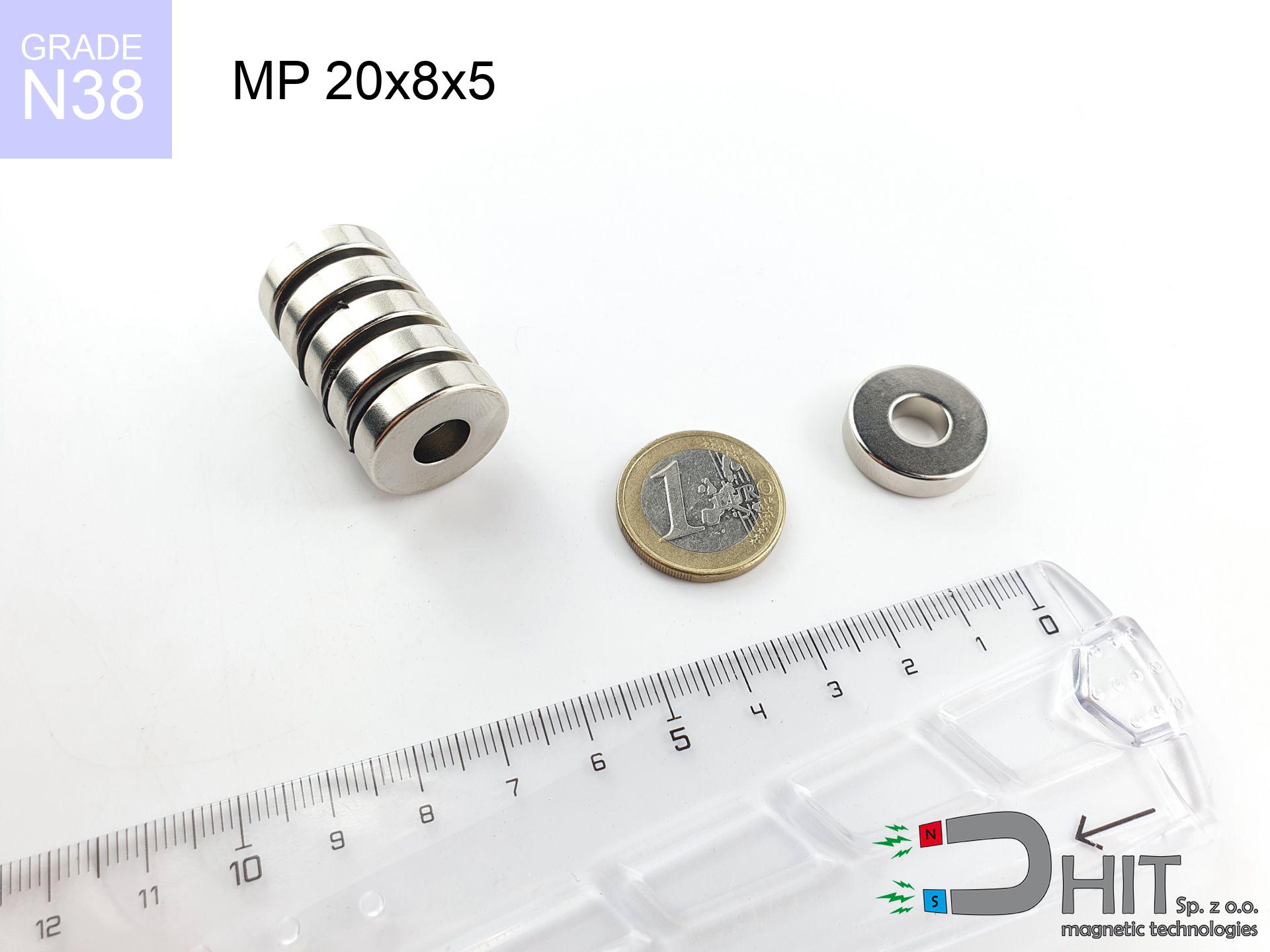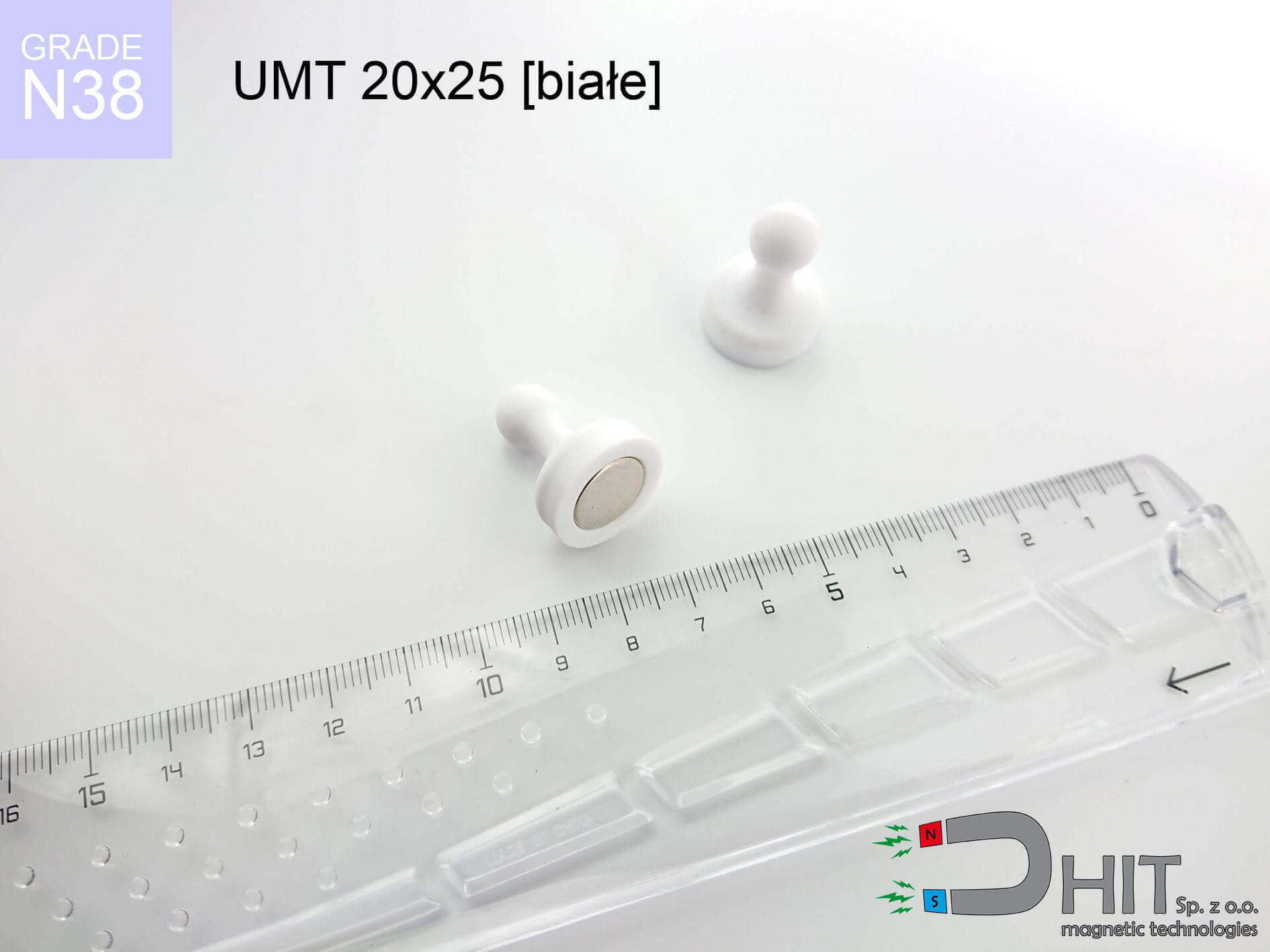UI 40x12x7 [CA] - badge holder
badge holder
Catalog no 150341
GTIN: 5906301813613
length [±0,1 mm]
40 mm
Width [±0,1 mm]
12 mm
Height [±0,1 mm]
7 mm
Weight
1.5 g
0.984 ZŁ with VAT / pcs + price for transport
0.800 ZŁ net + 23% VAT / pcs
bulk discounts:
Need more?Want to negotiate?
Call us now
+48 888 99 98 98
otherwise let us know using
contact form
the contact section.
Specifications and form of a magnet can be estimated on our
our magnetic calculator.
Orders submitted before 14:00 will be dispatched today!
Magnetic properties of material
Physical properties of sintered neodymium magnets Nd2Fe14B at 20°C
Shopping tips
Pros as well as cons of NdFeB magnets.
Besides their remarkable field intensity, neodymium magnets offer the following advantages:
- They have stable power, and over more than 10 years their attraction force decreases symbolically – ~1% (according to theory),
- They retain their magnetic properties even under external field action,
- In other words, due to the aesthetic surface of silver, the element gains a professional look,
- Neodymium magnets create maximum magnetic induction on a small surface, which allows for strong attraction,
- Thanks to resistance to high temperature, they can operate (depending on the form) even at temperatures up to 230°C and higher...
- Due to the ability of free forming and customization to individualized projects, magnetic components can be produced in a broad palette of shapes and sizes, which increases their versatility,
- Wide application in modern industrial fields – they are commonly used in hard drives, motor assemblies, medical devices, also multitasking production systems.
- Thanks to their power density, small magnets offer high operating force, occupying minimum space,
Disadvantages of neodymium magnets:
- Brittleness is one of their disadvantages. Upon strong impact they can fracture. We recommend keeping them in a special holder, which not only secures them against impacts but also increases their durability
- We warn that neodymium magnets can lose their strength at high temperatures. To prevent this, we recommend our specialized [AH] magnets, which work effectively even at 230°C.
- They rust in a humid environment - during use outdoors we suggest using waterproof magnets e.g. in rubber, plastic
- We recommend a housing - magnetic holder, due to difficulties in producing nuts inside the magnet and complicated shapes.
- Possible danger related to microscopic parts of magnets can be dangerous, if swallowed, which becomes key in the context of child health protection. It is also worth noting that small components of these devices can complicate diagnosis medical after entering the body.
- Higher cost of purchase is a significant factor to consider compared to ceramic magnets, especially in budget applications
Optimal lifting capacity of a neodymium magnet – what contributes to it?
Magnet power is the result of a measurement for optimal configuration, taking into account:
- using a base made of high-permeability steel, acting as a circuit closing element
- with a thickness of at least 10 mm
- with a plane cleaned and smooth
- with total lack of distance (without coatings)
- for force applied at a right angle (pull-off, not shear)
- at ambient temperature room level
Magnet lifting force in use – key factors
Holding efficiency is influenced by specific conditions, including (from most important):
- Gap between surfaces – every millimeter of separation (caused e.g. by varnish or dirt) significantly weakens the pulling force, often by half at just 0.5 mm.
- Pull-off angle – remember that the magnet holds strongest perpendicularly. Under shear forces, the capacity drops significantly, often to levels of 20-30% of the maximum value.
- Metal thickness – thin material does not allow full use of the magnet. Part of the magnetic field penetrates through instead of converting into lifting capacity.
- Material type – the best choice is high-permeability steel. Cast iron may generate lower lifting capacity.
- Surface condition – smooth surfaces ensure maximum contact, which increases force. Rough surfaces reduce efficiency.
- Operating temperature – NdFeB sinters have a negative temperature coefficient. At higher temperatures they lose power, and in frost they can be stronger (up to a certain limit).
* Holding force was checked on a smooth steel plate of 20 mm thickness, when a perpendicular force was applied, whereas under attempts to slide the magnet the lifting capacity is smaller. Moreover, even a minimal clearance {between} the magnet’s surface and the plate lowers the load capacity.
H&S for magnets
Keep away from electronics
GPS units and smartphones are extremely susceptible to magnetic fields. Close proximity with a powerful NdFeB magnet can decalibrate the sensors in your phone.
Nickel allergy
It is widely known that the nickel plating (standard magnet coating) is a potent allergen. If you have an allergy, refrain from direct skin contact or opt for coated magnets.
Immense force
Before use, check safety instructions. Sudden snapping can break the magnet or hurt your hand. Be predictive.
Finger safety
Protect your hands. Two powerful magnets will snap together immediately with a force of several hundred kilograms, crushing everything in their path. Exercise extreme caution!
Keep away from children
Strictly keep magnets out of reach of children. Choking hazard is high, and the consequences of magnets clamping inside the body are fatal.
Shattering risk
NdFeB magnets are sintered ceramics, which means they are very brittle. Collision of two magnets leads to them shattering into small pieces.
Power loss in heat
Standard neodymium magnets (N-type) lose power when the temperature goes above 80°C. This process is irreversible.
Dust explosion hazard
Fire hazard: Neodymium dust is highly flammable. Do not process magnets without safety gear as this risks ignition.
Danger to pacemakers
For implant holders: Strong magnetic fields affect medical devices. Keep at least 30 cm distance or ask another person to handle the magnets.
Data carriers
Very strong magnetic fields can corrupt files on payment cards, hard drives, and storage devices. Stay away of min. 10 cm.
Warning!
Details about hazards in the article: Magnet Safety Guide.

![Magnetic name badge holder UI 40x12x7 [CA] Magnetic name badge holder UI 40x12x7 [CA]](https://cdn3.dhit.pl/graphics/banners/magnet.webp)
![UI 40x12x7 [CA] - badge holder](https://cdn3.dhit.pl/graphics/products/ui40x12x7-vop.jpg)

![UMP 94x40 [3xM10] GW F550 Silver Black Lina / N52 - search holder UMP 94x40 [3xM10] GW F550 Silver Black Lina / N52 - search holder](https://cdn3.dhit.pl/graphics/products/ump-94x40-3xm10-gw-f550-lina-gub.jpg)



